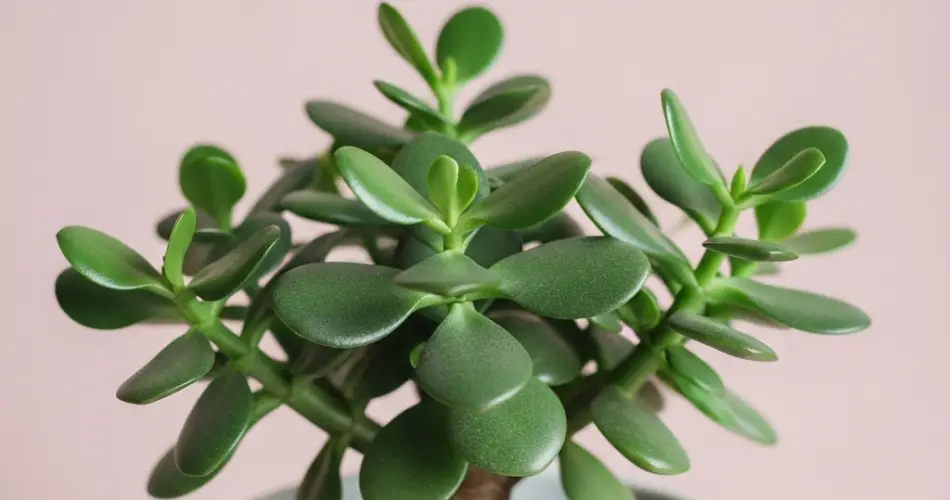The Jade plant (Crassula ovata), often called the Money Tree, is a beloved succulent known for its thick, glossy leaves and ease of care. It’s not just a popular houseplant but also a symbol of good luck, prosperity, and friendship in many cultures. If you’ve been considering adding a touch of greenery to your home or office, the Jade plant might be exactly what you need.
Here are the secrets behind this remarkable plant, why it’s worth bringing into your space, and how to care for it so that it thrives and brings beauty and positive energy to your surroundings.
What Makes the Jade Plant So Special?
1. Symbol of Prosperity and Good Fortune
One of the reasons the Jade plant is often called the Money Tree is because of its association with wealth and good luck. Many people believe that keeping this plant in their homes or businesses invites financial success and abundance. Its rounded, coin-shaped leaves symbolize prosperity, making it a favorite for Feng Shui practitioners who recommend placing it in wealth corners of homes or offices.
2. Easy to Care For
Unlike many houseplants that require precise conditions and regular attention, the Jade plant is extremely forgiving. It thrives with minimal watering and adapts well to different lighting conditions, making it ideal for beginners or those with busy schedules.
3. Long Lifespan
With proper care, a Jade plant can live for decades — sometimes even becoming a family heirloom passed down through generations. Its sturdy branches and succulent leaves make it resistant to many common plant problems.
How to Care for Your Jade Plant
Though resilient, your Jade plant will thrive best if you follow some basic care tips:
Light Requirements
Jade plants love bright, indirect sunlight. Ideally, place yours near a window where it can get several hours of light daily. Direct sunlight in the morning or late afternoon is perfect, but intense midday sun can sometimes cause leaf scorch. If your Jade’s leaves start turning red or purple, it may be a sign of too much sun exposure.
Watering
One of the most common mistakes with Jade plants is overwatering. Since it’s a succulent, it stores water in its leaves and stems, so it doesn’t need frequent watering. Allow the soil to dry out completely between waterings. Depending on your climate and season, this could mean watering every 2-3 weeks in summer and even less during winter.
Soil and Drainage
Use well-draining soil designed for succulents or cacti. Jade plants do not tolerate waterlogged soil, which can cause root rot. Ensure your pot has drainage holes to allow excess water to escape.
Temperature and Humidity
Jade plants prefer average household temperatures between 18°C and 24°C (65°F to 75°F). They tolerate dry indoor air but avoid placing them near cold drafts or heating vents.
Propagation: How to Grow New Jade Plants
One of the joys of having a Jade plant is that it’s easy to propagate. You can create new plants from leaves or stem cuttings, making it simple to multiply your greenery or share with friends.
Propagation from Stem Cuttings:
-
Use a clean, sharp knife or scissors to cut a healthy stem about 3-4 inches long.
-
Allow the cutting to dry for a few days to form a callus over the cut end. This step helps prevent rot.
-
Once calloused, plant the cutting in well-draining succulent soil.
-
Water lightly and keep the soil slightly moist but never soggy.
-
Place in indirect sunlight, and within a few weeks, roots will start to develop.
Propagation from Leaves:
-
Gently twist off a healthy leaf from the plant.
-
Let the leaf dry and callous for a few days.
-
Lay the leaf flat on top of succulent soil.
-
Mist the soil lightly every few days until new roots and tiny plants form.
Common Problems and How to Solve Them
Despite being hardy, Jade plants can face a few challenges:
-
Leaf Drop: Usually caused by overwatering or sudden temperature changes. Adjust watering habits and keep the plant stable.
-
Pests: Occasionally, Jade plants may attract mealybugs or spider mites. Treat infestations by wiping leaves with a cotton swab dipped in rubbing alcohol or use insecticidal soap.
-
Leggy Growth: If the plant grows tall with sparse leaves, it may be lacking sufficient light. Move it to a brighter spot and pinch back long stems to encourage bushier growth.
Benefits Beyond Beauty
The Jade plant isn’t just visually appealing; it also contributes positively to your environment:
-
Air Purification: Like many succulents, Jade plants help improve indoor air quality by absorbing toxins and releasing oxygen.
-
Stress Reduction: Caring for plants and having greenery indoors can reduce stress and improve mood.
-
Decor Versatility: Its compact size and architectural form make it suitable for desktops, shelves, and windowsills, complementing modern or traditional decor.
Where to Place Your Jade Plant for Best Results
For maximum benefits—both aesthetic and energetic—consider placing your Jade plant in:
-
The southeast corner of your home or office to attract wealth (according to Feng Shui principles).
-
Near an entryway or window to welcome positive energy.
-
On a sunny desk or shelf where it can brighten your workspace and improve focus.
Final Thoughts
If you’ve been hesitating about adding a Jade or Money Tree to your plant collection, now is the perfect time. This plant offers not only beauty and ease of care but also cultural significance as a symbol of prosperity and good fortune.
With proper attention to light, watering, and soil conditions, your Jade plant can become a long-lasting companion that enhances your living space and lifts your spirits.
By understanding these secrets, you’ll appreciate why many gardeners wish they had bought a Jade plant sooner—and why you might too!



